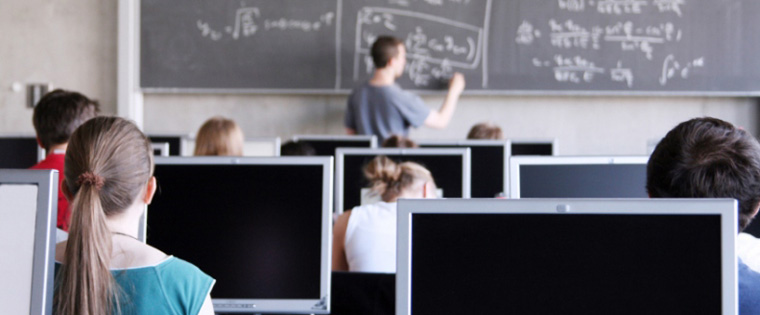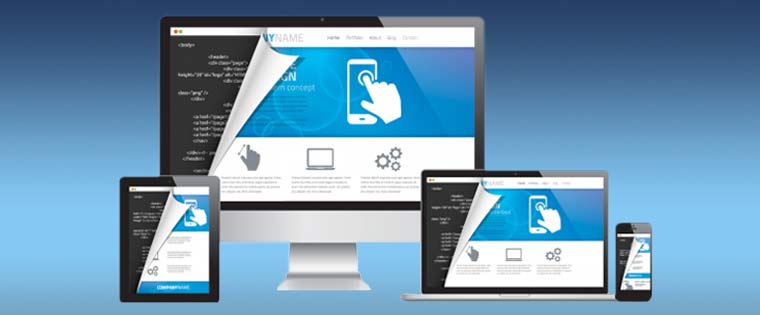Pep Up Classroom Training With Technology
This post highlights the increasingly prominent role of technology in the learning process.

Classrooms have always been the ultimate places for effective learning. Now with employees spread globally, the increasing need for multilingual and consistent training has reduced the feasibility of classroom training. Advancements in Internet technologies have reduced the attention spans of learners, further straining the traditional methods. To counter all this, the use of technology has become essential in the learning and teaching ecosphere. From laptops, to tablets, to smartphones, technology has altered the way we learn, and it is only going to influence us more as time passes.
Online collaboration tools can enable students and teachers maintain a single place to exchange thoughts or clear doubts. Presentation tools allow teachers to convey a subject in a more visually appealing way. Using smartphones or tablets, students can now record lectures for future references, increasing the impact of every single session. Online course management tools can track the entire classroom session’s progress very easily. Below are some of the ways technology can enhance classroom learning.
Flipped Classrooms
This method turns the concept of learning upside down. In traditional classrooms, information is conveyed to students in the classroom. Based on the topic, they are expected to do an assignment that goes to the teacher for evaluation. Flipped classrooms reverse this role; students are provided with course content, often online, which they are expected to study before attending the class. Classrooms turn into places of active discussion, with the professor mentoring the entire process. This approach turns learning into a user-centric process and makes the class-time more productive and interactive. Students can go beyond the textbook matter and explore their natural curiosities.
Virtual Instructor-led Training
This method of training can still be considered traditional with one small modification; the trainer and learner are at different locations. Virtual training utilizes collaboration tools for conducting sessions, enabling presenters to share videos, audio, or written documents, in real time. Learners can connect with the teachers or other learners just as in a real classroom, which results in a higher retention rate and learner satisfaction. This method can significantly lower training costs for a company, at the same time giving a large audience the benefit of training with a more human element.
E-learning Courses
Integrating e-learning programs in the existing curriculum can overcome the many shortcomings of traditional methods. In case of face-to-face training, the rate of knowledge retention is low. A short e-learning course, summarizing all the concepts of the training, can help people recollect it, to the point. The scope of personalization is very restricted in traditional training while e-learning programs can be specifically designed for a particular audience. Most e-learning programs are equipped with in-built tests and assignments that help evaluate the progress of the learner at regular intervals. Many times, the effectiveness of traditional learning depends on the skills and expertise of the trainer. If all instructors use a standardized, tried and tested e-learning program, learners worldwide can receive the same quality of training.
Social Media Interactions
Learning is all about the effective transfer of information. What better way to facilitate that than through social media at everyone’s disposal. Using social media for educational purposes is revolutionizing the way we exchange information. Social media is omnipresent, free most of the times, and fun. Online chat rooms, discussions, forums, and general sharing of subject matter impart a great deal of interest to learning. Learners can be engaged with a topic, 24/7. Subject matter experts can lend their advanced knowledge to facilitate a discussion. However, social media use should be limited since it is open to all and anyone can post misleading information.
The role of technology is only set to grow bigger in our learning systems. With each passing day, technology evolves in leaps and bounds. So what will the role of technology be in the way we learn, what’s the way ahead?
Augmented Reality (AR): Wearable AR devices have countless applications in the world of education. Augmented Reality can create simulations of work environments and carry out the learning process right at the learners’ desks.
Touch-Boards: With advancements in touch and gesture technology, the whiteboard will be someday replaced by giant LCD touchscreens. This will help teachers convey a greater amount of information in lesser time.
Biometrics: Eye-tracking moments can be invaluable in determining how students absorb information. This information can analyze course effectiveness, helping course designers create more robust learning systems.
Technology for learning may not be perfect yet, but it is getting there. The ideal learning scenario would be the one that is inspired by the good in both the ways. This equilibrium will change the way we learn someday.





